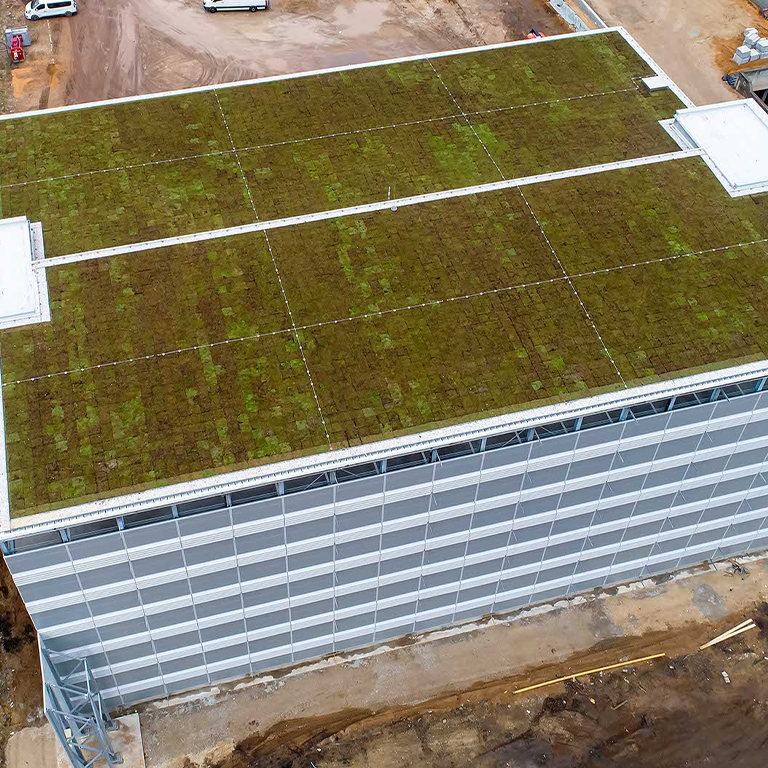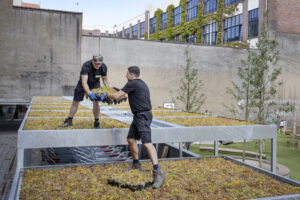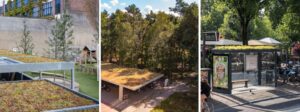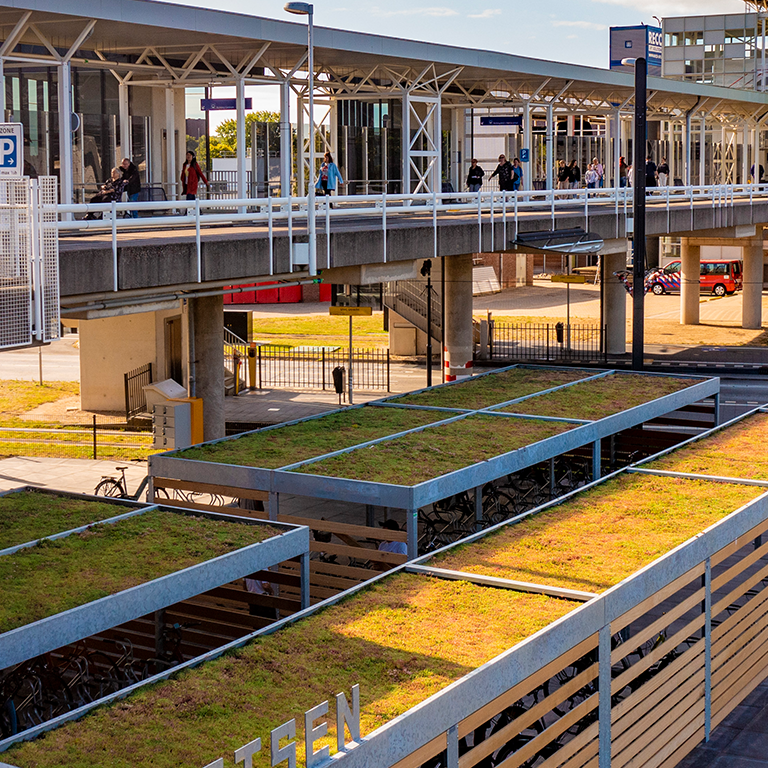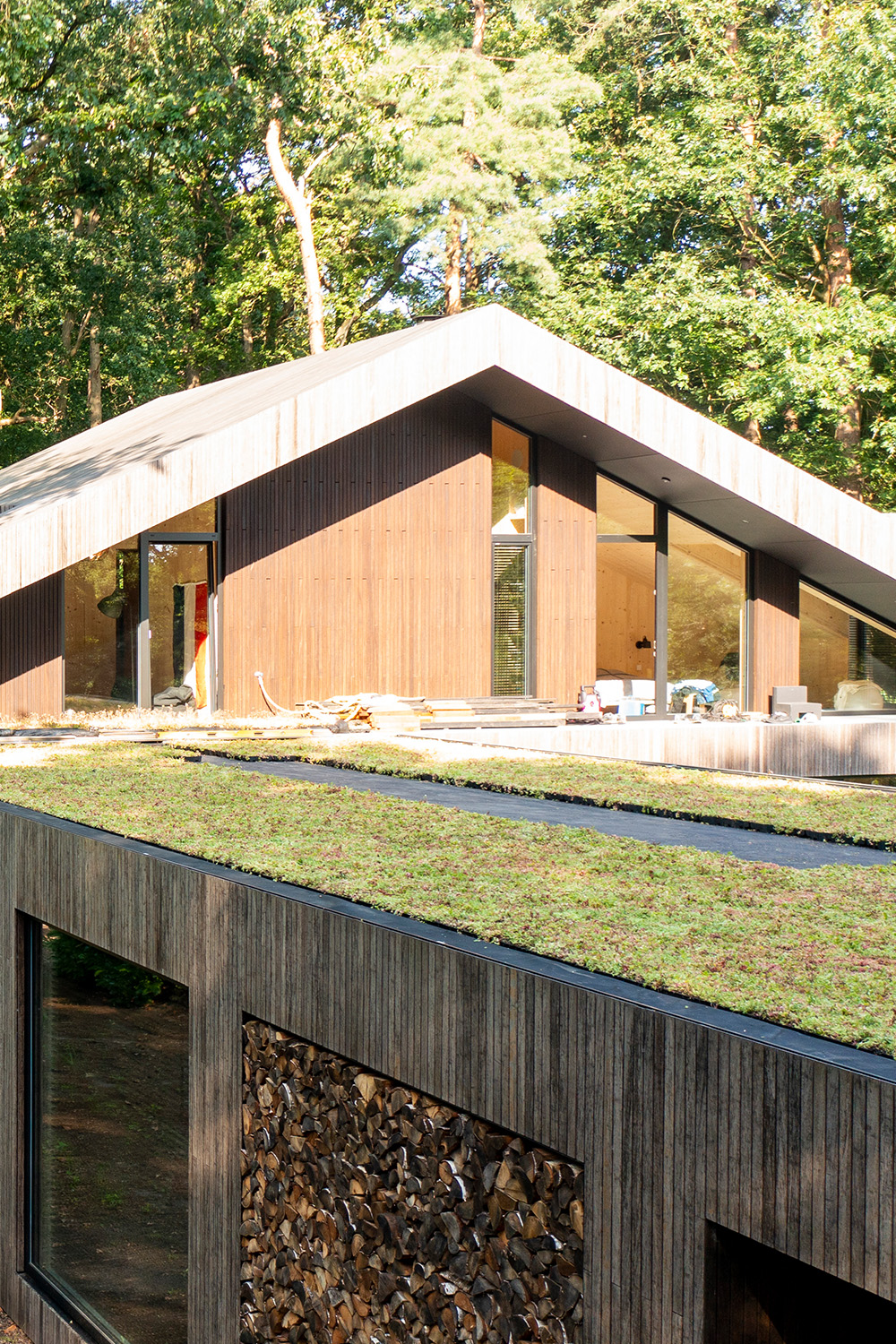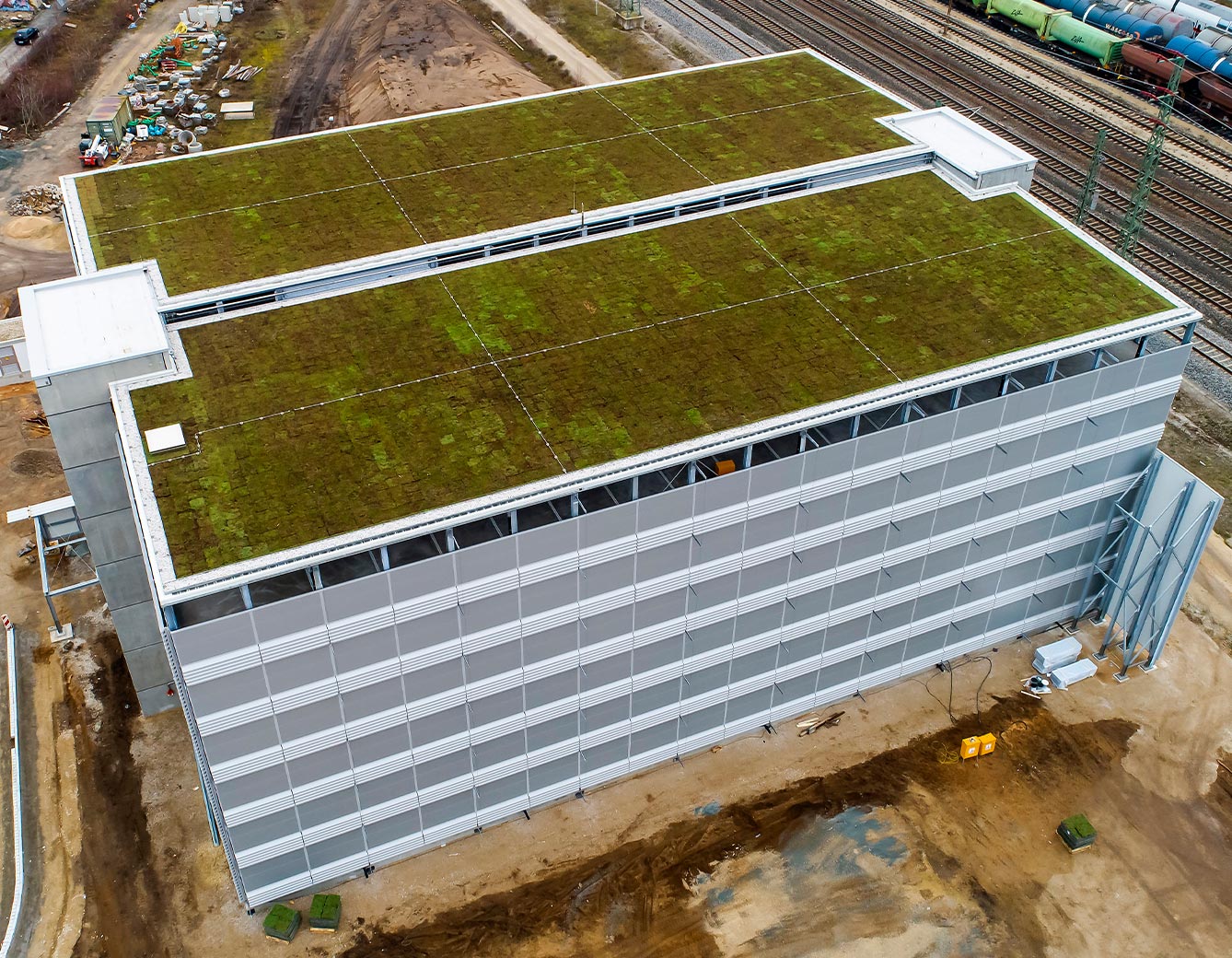A green roof helps to create a green environment in urban areas. An extensive green roof with various sedum plants helps improve the air quality. This reduces CO2 and traps particulate matter. In addition, green roofs encourage biodiversity. All kinds of animals such as beetles, bees, spiders and hoverflies find a place to hide or nest on a living roof. Moreover, more greenery contributes to a healthier and more liveable urban climate by increasing transpiration and evaporation of precipitation and lowering ambient temperatures.
Different green roofs
Green roofs can be divided into intensive roof gardens and extensive green roofs. An intensive roof garden contains a mix of plants, grass and sometimes even trees. Intensive roofs are usually accessible but very heavy on the roof structure. Extensive roofs are covered with a layer of substrate in which different species of sedum often grow. They are easy to maintain, but often not intended for recreational purposes. Extensive green roofs are very low-maintenance and can easily be retrofitted to existing roofs. The MobiRoof ECO system is used to create an extensive sedum roof.


